Video is used in weightlifting to determine correct versus incorrect form and motion and to recommend improved skills and performance.
Video Playback within IWF
The International Weightlifting Federation (IWF) uses Dartfish video technology during the international competition to clarify controversial decisions, as well as to undertake medical and coaching research.
Last March, the IWC’s Technical Committee Members had already tested Dartfish Video Playback Technology, during the Youth World Championships in Las Vegas. It was the first occasion to record and archive the lifts of athletes.
The VPT (Video Playback Technology) or VR (Video Replay) is a system using video technology to review the Referees’ or Jury’s decision if challenged or in case of disagreement within the Jury. Indeed, when the decision of the majority of the Jury members, differs from that of the Referees’ decisions, the Jury may review the Referees’ decision and/or Jury’s own decision by way of VPT.
Since 2019, at Senior, Junior and Youth World Championships and at Olympic and Youth Olympic Games, it is obligatory to apply VPT.
At the IWF World Championships, where every attempt is made and when its adjudication might be critical in the qualification for the Tokyo 2020 Olympic Games, four cameras are installed around the stage: one is located in front of the stage, two are positioned diagonally to the stage, and one is located at the back, the same height of the stage. The system and the monitor are located on the Jury table, for focus on key moments in making accurate decisions.
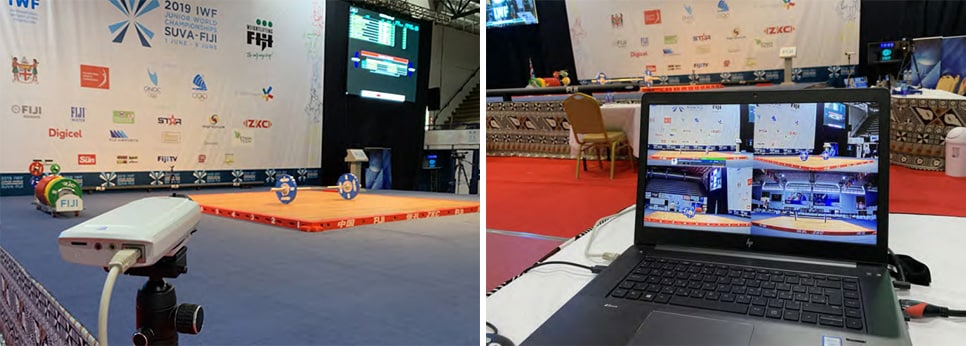
Some external data, scores, for example, are added in the video feed to produce incredibly rich content. Camera feeds are shared with practitioners, coaches or fans, either during or after the event using a public screen and Dartfish TV. During competitions where VPT is used, each attempt is recorded with the Dartfish Solution. The lifts are uploaded to IWF’s website and to Dartfish.TV.
Thanks to the Dartfish tagging function, videos from all attempts can be searched by filtering any data – name, country, weight, etc..This system is also used as a video archive, for technical official training, scientific analysis, seminar/education, etc.
IWF has not only created an instrument to implement fair refereeing in their competitions, but has also developed an invaluable viewing asset for the weightlifting family.
Benefits of Video Analysis for Weightlifting
Video analysis is also used in an athlete’s training. In weightlifting, it is very important for the exercises to be correctly executed for progress and to avoid injuries. Thus, video allows athletes to see and understand their movements to improve technique and to increase power.
Video can be used in weightlifting for multiple purposes:- to help the coach set session goals, identifying areas needing improvement- to ensure the athlete’s understanding of proper movement execution- to help develop a novice athlete’s understanding of a perfect lift- and much more.
Dartfish is very powerful for qualitative analyses and comparison of multiple movements. It also documents a variety of quantitative linear and angular measurements. Let’s explore the most popular video tools used in weightlifting:
Split-Screen
Split-screen is the most popular video tool using in weightlifting. One picture is worth a thousand words, right? What about an enriched video with angles, measurements and slow motion.
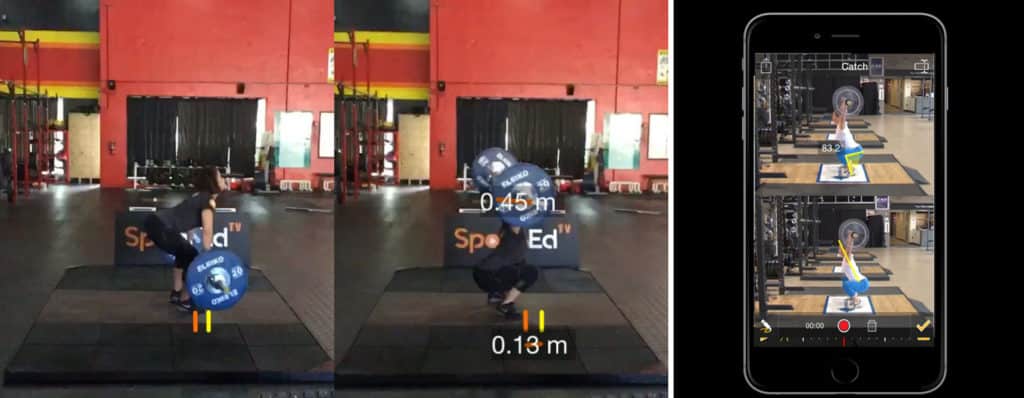
Measurements and Angles
Positioning is key in weightlifting. Positions allow for maximum leverage and allow momentum to be generated in the right direction, because if you don’t get it right from the start, it snowballs to the end of the lift.
Measuring angles, distances, and amplitude allow coaches to correct athletes’ postures, live, during training. Athletes can instantly see the weakness on the screen and apply the correction for the next lift.
Bar tracking
With myDartfish ProS, you can track the bar position during your lift. You can focus on and isolate part of a rep to really understand how well you performed your last lift and how to improve your next one.
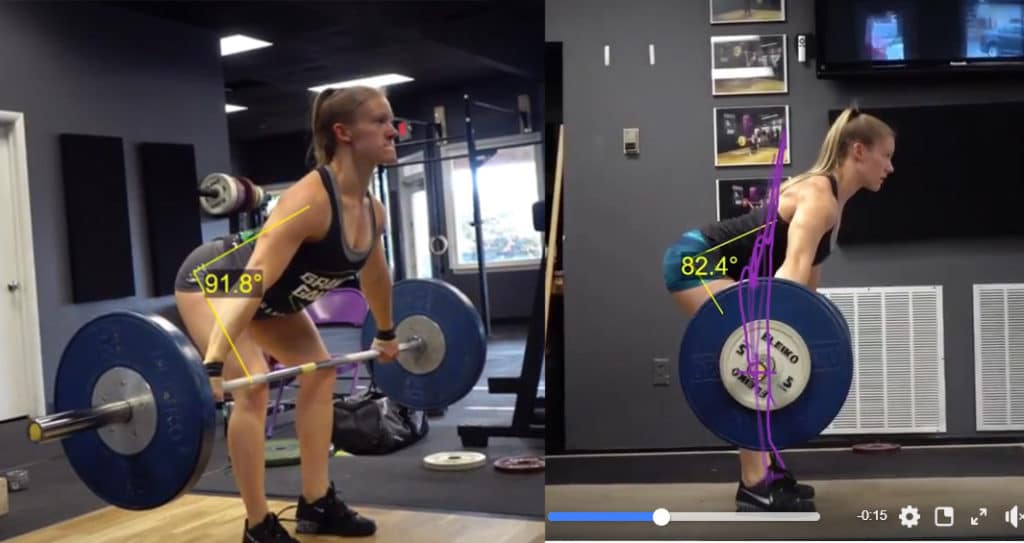
Tracking Distance, Time and Speed
There are many positions during a lift that need speed, but there are many that need to be performed slower with focus on proper technique. Coaching techniques in weightlifting may vary, but the mechanics which dictate the techniques do not. That is because the biomechanics of lifting come from the unchangeable source of the laws of physics themselves.
With myDartfish ProS, you can generate a 2D bar trace on your video. The Dartfish Solution captures instantaneous velocity and peak power for each rep within a set.
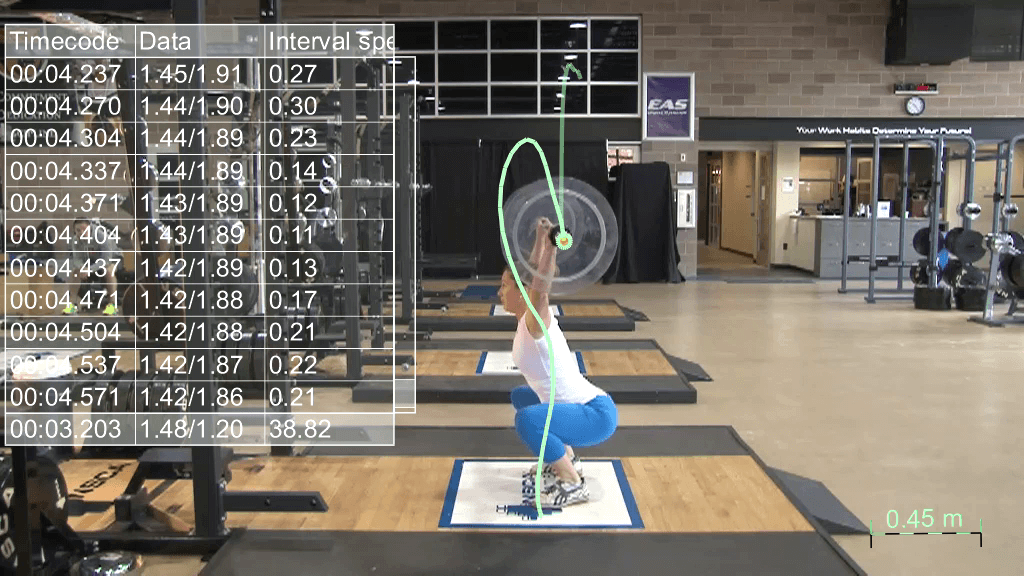
Download myDartfish Mobile in your AppStore or Google PlayStore, and start tracking progress.
If you need a full bar tracking and measurements analysis tools, enjoy 15 days free trial of myDartfish ProS!
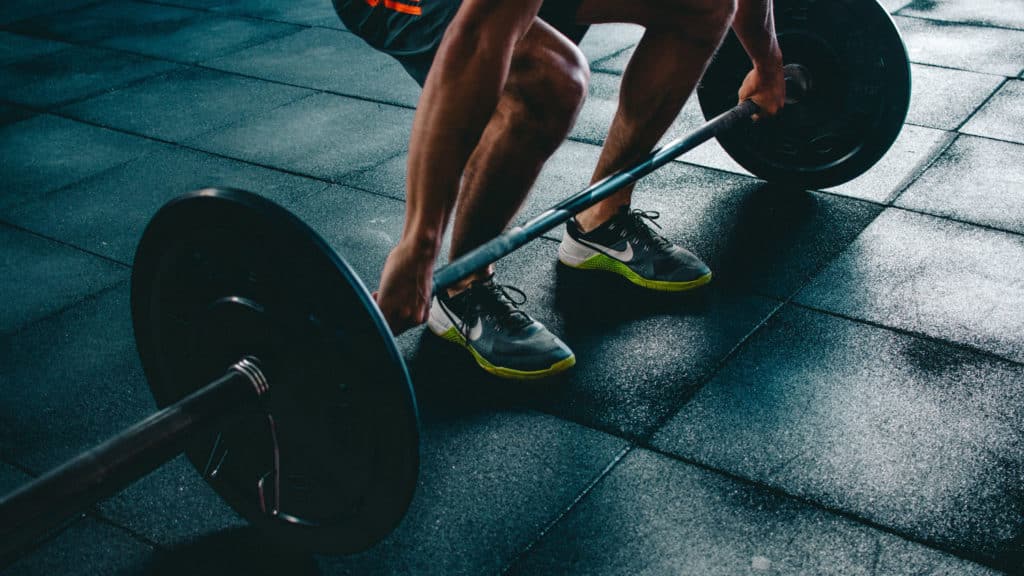
Comments are closed.